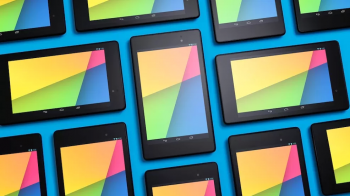
Remembering the Nexus 7: Is it Time for a New Google Tablet?
When Google first launched the Nexus device line several years ago, it created a standard of what an Android smartphone should be. The Nexus phones were great devices tailored for Android enthusiasts, and we would eventually see Google bring over the “Nexus” branding to its line of tablets, the first of which was the 2012 Nexus 7, named after its 7-inch display.
A year later, Google would give us the Nexus 7 2013 edition, which came with improvements in performance, as well as a more refined design. This of course was Google’s answer to devices like Apple’s iPad mini, which up until today has maintained a significant market presence. Nowadays, I think it’s a shame that we’ve never gotten another “official” Google tablet, with the 2018 Pixel Slate being the last one from the company. Now would seem like the right time though, given the popularity of Apple’s iPad line and Samsung’s Galaxy Tab devices, both of which offer high-end specs and performance at premium prices. And looking back, the Nexus 7 was able to achieve what a lot of competing devices at the time couldn’t, by offering a quality Google tablet experience.
With that being said, let’s take a quick trip down memory lane, and re-visit what is arguably one of the best devices that Google ever made.
Specs and Design
In terms of specs, the tablet had a great list of internal components. The Nexus 7 came with a high-resolution 1920x1200p display, and this was covered with a layer of gorilla glass. Powering the tablet was a Qualcomm Snapdragon S4 Pro chipset and Adreno 320 GPU, paired with 2GB of RAM and the choice of either 16 or 32GB of onboard storage. There were 5-megapixel and 1.2-megapixel cameras on the front and back respectively, and this whole set-up ran on a built-in 3950 mAh battery.
The design of the Nexus 7 should appeal to minimalists, those who would prefer a subtle matte look as opposed to the glossy sheen of other Android tablets at the time. It had a simple charm to it, and despite being made of plastic it didn’t feel cheap at all. The Gorilla Glass display protected the screen from damage and added a lot to its aesthetic longevity. Of course, it also came with huge bezels on the front, but again, this was 2013 and we wouldn’t see edge-to-edge displays for at least another few years.
Media and Software
As a media consumption device, the Nexus 7 was impressive. The bright screen, coupled with a pixel density of 323 ppi meant that you had an awesome display to read your eBooks, browse the web and watch content. This really made it stand out from the otherwise crowded compact tablet market. Speaking of compact, the Nexus 7 fit easily into your hand, and it had just the right amount of weight to remind you that you weren’t holding some cheap entry-level gadget – this was Google with some of their finest hardware.
Now with this being a Nexus device, it goes without saying that the tablet received extensive software support. The tablet launched with Android 4.3 Jellybean, which at the time of course was making waves as far as Android versions go, and eventually it did get support for Android Kitkat, Lollipop, and Marshmallow. That’s four Android versions, which is a level of software support that we don’t see much on most smartphones these days.
Performance and Cameras
When it came to performance, the 2GB of RAM on the tablet was of course enough to play most games on Android at the time – and we have to remember this was a time when a lot of people were buying tablets as media consumption and gaming devices. The Snapdragon S4 Pro and Adreno GPU made sure that you were able to play games and multitask on the Nexus 7 without much issues, and this certainly added to the tablet’s overall value as an entertainment device. Battery life was good as well and ensured that you could enjoy uninterrupted reading or browsing for hours on end.
Camera quality wasn’t the best, admittedly. At this point in time, Google was still years away from perfecting their image processing software that we now see on the Pixel phones. But as far as basic mobile photography was concerned, the Nexus 7 was able to give you decent-enough shots that were still ways ahead of what you were able to achieve on other tablet cameras at the time.
Is it Time for a New Pixel Tablet?
The Nexus was certainly great for its time. It showed off what Google was capable of in the Android tablet landscape, and gave a lot of us some good memories. It’s a shame that Google still hasn’t attempted another go at the compact tablet market, and I’m sure that there are some of us who would still like to see a Pixel tablet of sorts.
Given the company’s recent push to release more premium devices like the Pixel 6 and 6 Pro, its own Tensor chipset, as well as continued development on Android 12L, it would be a dream come true if it were to reintroduce a tablet device to the Pixel line. Google has proved that software experience matters a lot when it comes to actual usage, and with all the technological resources at its disposal, a new Google-branded tablet would seem like a no-brainer indeed.
For now though, all we can do is play the waiting game.